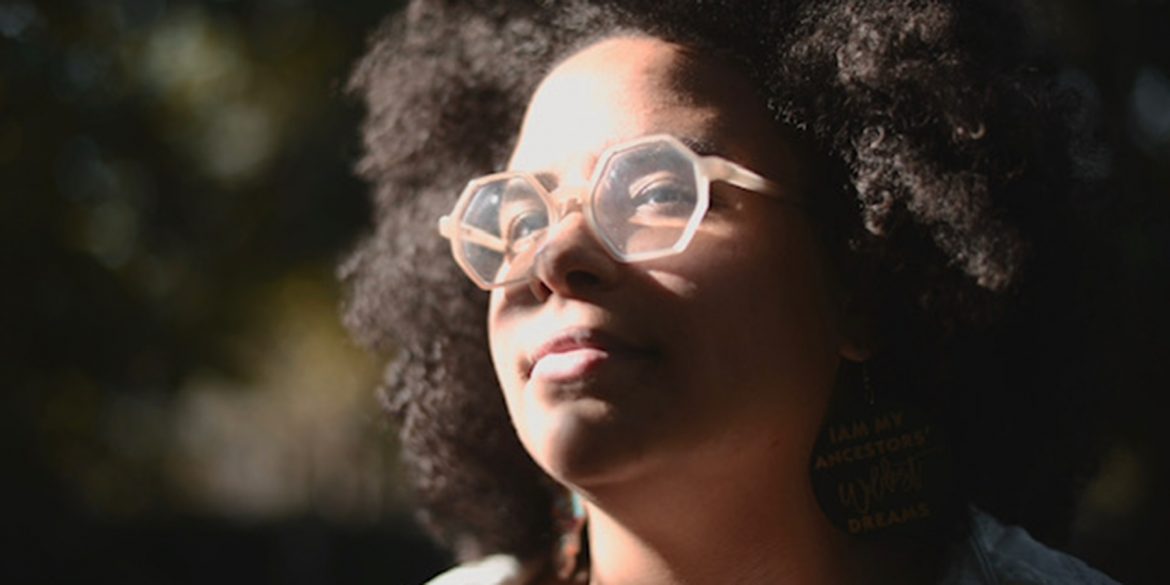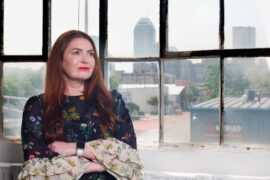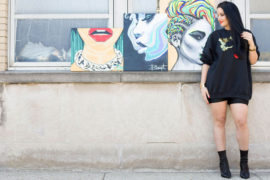We got to chat with Korie Pickett, aka KP, about her independent zine, Queen Spirit, jewelry making and writing as a therapeutic release, and why learning to become a sustainable artist is so important in a world where the struggling artist stereotype is glorified. KP is passionate about fellow artists accepting their worth and living by doing what they love. Each of KP’s talents are an entity, yet they all mesh together to reveal her identity as an artist. Queen is a word that she uses to describe herself, and we couldn’t agree more. KP is a talented and inspiring woman. She makes us feel like anything is possible, and her work fosters the possibilities she makes you believe can come true.

Cory Cathcart: Tell us a little bit about you.
Korie Pickett: I’m from this little town called Ingalls, Indiana. It’s next to Pendleton. It doesn’t have a stoplight or anything. I grew up there, and constantly wanted to leave Indiana. I graduated college and moved around a bunch. I ended up finding my way back to Indiana. I met my partner who already had a business in Bloomington, I decided to go ahead and move there. Now we spend part of our time there and part of our time in North Carolina cultivating the tattoo shop aspect of our lives. He is a tattoo artist. I am very business minded, so I do all the payroll and stuff. It’s fun to be a part of it. I love all kinds of music. I was a music business major in college, so I would immerse myself in anything. From opera to jazz to hip-hop to freestyle.
These days I listen to a lot of Rapsody. She’s my icon and gets me, you know, all right I’m ready to go! I’m ready to take on the world. Very Beyonce inspired as well. Really just strong powerful humans that make music, that’s who I gravitate towards these days. Imposter syndrome is real, so I ask who can I listen to that’s going to get me going. I’d say that Chance The Rapper inspired a lot of where I am now. I would see that he did a lot independently and he was very plugged into the idea of this is my purpose, so I am just going to keep doing it. I love Prince. If Prince could be my father that would make my whole life. If I could be the product of immaculate conception because of prince then that would make my life. (Laughs)
CC: What came first for you, photography or writing?
KP: I started writing first. I’ve always been a writer, even as a little kid I would write stories. My mom was a photographer, so I was always around photography in that way. I was always the subject and hated having my picture taken for that reason. Now having pursued photography I understand that my mom was using me to practice. I get it now, but being a kid I thought it was so annoying! But I’ve always been a writer, I write just to write. I didn’t feel comfortable sharing it for a long time. I felt more comfortable doing photography in a public forum. I could take pictures and put those into the world, but I wasn’t ready to put my words into the world yet. That’s evolved. Now I am just going to write and if you like it, you like it, and if you don’t, you don’t.
CC: Do you shoot film or digital?
KP: I do digital. I shoot with a Sony. I honestly haven’t been taking as many pictures. Pre-pandemic I was at every show. A lot of my friends are musicians, so if they had a show I’d be there. Once the pandemic happened a lot of my joy was taken. I love capturing people doing what they love. That’s why I love show photography, because those are my friends who are passionate about their music and art form. It felt so easy to capture that. I would still do family shoots and senior pictures, but it was for people I know closely. I really quit promoting anything photography because the magic for me is that element of being able to capture people doing what they love. I still shoot digital. We’re doing a project at the tattoo shop right now called The Crane Project and we’re only taking polaroids for that. That’s been really cool. There’s something so nostalgic about a polaroid. Being able to do that sparked my interest again in wanting to play more with different mediums, even just within photography.
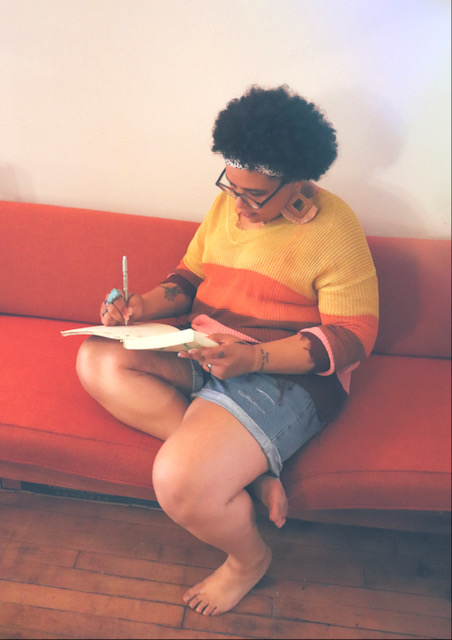
CC: What’s The Paper Crane Project?
KP: The Paper Crane Project is this story where if you fold 1,000 paper cranes then you get to make a wish and that wish will come true because you did the project. Each artist’s goal is to fold 1,000 paper cranes and to tattoo a thousand paper cranes on people. People that come and support the project are supporting the wishes of the artists. For instance, one of them wished to have a car, and they’re able to use the money they make from the crane project to pay their car payment now. Me and my partner’s wish is to buy the building (that the tattoo shop is in). It’s very community involved. Each tattoo artist folds the crane with the person getting the tattoo. Then we take a polaroid of them holding the paper crane. We’d like to do some kind of art installation at the end of it that shows all the polaroids and all the cranes. I’m excited for that day.
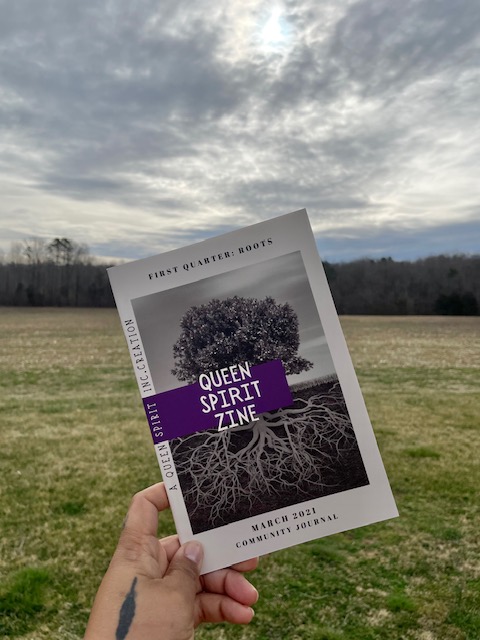
CC: Can you tell us about your zine, Queen Spirit?
KP: I started Queen Spirit originally as a digital space. It was called Queen Shit. I needed a space where I could talk shit and not feel bad about it. At the time I was a director of marketing in corporate America. I did not feel creatively fulfilled. It was a great job and taught me a lot. The field that I was in was very specific. I couldn’t be too creative. They had templates we had to follow, because that was their brand. That’s great, it worked for them. It didn’t really work for my creative spirit, so I thought of what I could do to challenge myself more in design. I started the digital zine. At first it was just me doing the design, layout, and piecing things together. I have a lot of creative friends, so I asked if they’d want to make some artwork or write something so that I could make the zine. Everyone was into it. It was a space to be free and say or create what you wanted. It became very communal. I would make that every month, because it was something for me to piece together. Then after about a year and a half of doing it virtually I wanted to make it into print. I started looking into publication. I quickly learned it is not lucrative, but I was pretty determined. I knew I could save some coin and at least release one physical zine and see how it was received. I really believed it would be a one and done. I wanted to put myself on the cover because I wanted to see myself on a magazine. (Laughs) I made a physical copy and it was really well received. We did QR codes for music, so all my music friends were on board. I am an advocate for people reading more. I kept going and it was a snowball effect. I would do a call out on social media, and ask people to send me whatever. It has never been professional honestly. Thankfully it’s gotten a little more organized as it has progressed. It’s open submission. It has created a lot of opportunities for me in the world of writing and publication. It’s also created a way for other creatives to become published writers or photographers. That was my whole intent. My ultimate goal is when someone contributes they can be compensated. The whole point of Queen Spirit is to change the narrative from struggling artist to sustainable artistry.
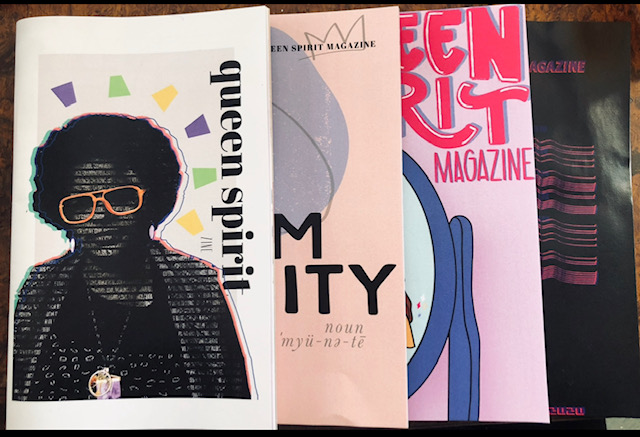
CC: “Changing the narrative from struggling artist to sustainable artistry,” what does that mean to you?
KP: I’m going into my 4th year of creative living. I walked away from a career job with a salary and wanted to pursue my art full time. The reason that I have so many moving parts of what I do is because it required a lot of hustle to get back what I was walking away from. I had created a life that was very sustainable, because I was getting a regular paycheck. There’s nothing consistent about walking into art full time. I was a barista part time. I would find filler work until I could be fully 100 percent art. It took a long time to get there. It took a lot of me learning lessons that I have to be confident in what my art is worth. There’s a struggle with artists where we ask if we are charging too much. There’s a lack of confidence there. I still struggle with imposter syndrome. It was hard to be able to say I am a sustainable artist. There were so many times when I didn’t know how I was going to pay rent. I was living the struggling artist narrative. That’s been glorified, and I don’t really know why. It’s easy to say we want to be artists, but what does it look like to be a sustainable artist? We see the struggle, or the “You made it!” There’s not a lot of the in between, and there’s not a lot of education about the in between. So, the mission of Queen Spirit is committed to creative movements that save lives. Creativity has saved my life time and time again whether financially, emotionally, or mentally. It’s been my guiding light. Because I chose to embark on this journey of full time creativity, I am able to show my road map. It is possible to be a sustainable artist, but what about taxes? What about the business side of being an artist? I had to struggle and stumble and learn on my own. I decided if Queen Spirit can be an entity that can teach and can hopefully one day provide any kind of support, I’d like to be able to do that. Queen Spirit is essentially the umbrella for endless possibilities.
CC: How did you get into jewelry making?
KP: I went through a really bad breakup. I needed a way to release my anger. I tried boxing and that did not work for me. It just didn’t release anything for me. I knew I had to do something creative. I have to process through creativity. My grandpa had always made penny rings. He is an artist, he is a painter, and I had always watched him make things. Metal is hard, and it would require work. I found someone who did metal stamping. I could make rings, but metal stamping, like… I’ve gotta hammer. (Laughs)
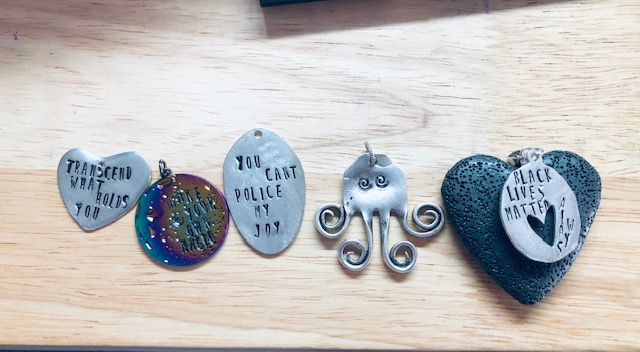
I would get metal blanks and hammer out cuss words. I would hammer out all the shit I was mad about. It just felt so good. My cousin asked me to make a bracelet. Then people randomly started asking me if I could make them a necklace or other things. I realized I could make some cash doing that. I was turning my anger into something positive. I realized I love upcycling materials. That’s how I started doing spoon rings and silverware jewelry. I love working with metal because it requires a lot of physical exertion and thinking outside of the box. It progressed on its own. I would do pop up shops and if people didn’t buy things then I would just wear them. That’s been the jewelry journey.
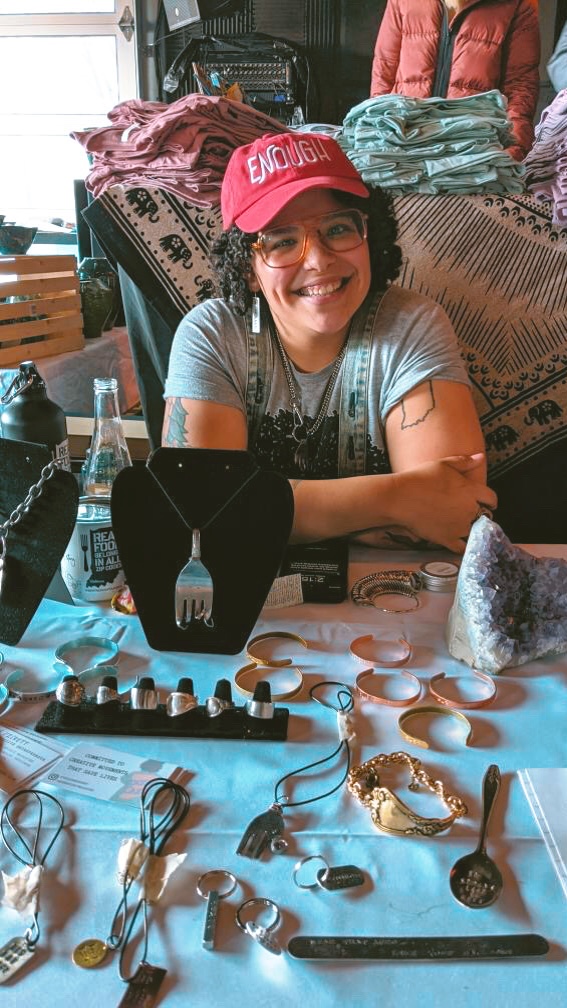
CC: Can you talk about the dream that led to KORudos?
KP: That wasn’t that long ago, but it feels like a wild time in my life. I was in the beginning of my healing journey. Which was the thickness of it for me, because I realized what happens when I’m introspective and it was a lot. I had wildly vivid dreams during that time. That’s when the entire idea for KORudos came to me. I woke up and wrote it all down and I knew if I didn’t do something with the information I was going to be doing a disservice to myself. It became my letting go project. I was harboring a lot of grief. I started grieving when I was 8 years old. That’s when I lost my brother, and my mom a few years after. As a kid, you don’t know how to navigate that. The people in my family were on their own grieving journey. I was constantly writing during that time. I would write something and be like did that just come from me? It was a very spiritual experience. I talked to one of my friends, Red August, aka Michael, and I said “I don’t have any money, but I have heart and a lot of great words. Would you want to do a project with me?” He listened to everything I had recorded and thought we were supposed to tell it in a visual way, not just your writing or poetry. I committed to going to all the places that I held grief and associated with grief. I was going to walk away from all of them. When we were filming he was a saint for going through it with me. It was very hard for me. He was there as my friend and also as a creative counterpart to remind me that I couldn’t stop. Before we started filming I told him that when I just wanted to quit I needed him to say no.
There were days where I was like, “This is bullshit, why did I agree to go through with this?” It was necessary. The beauty of it is that there are people who have viewed it and reached out to me to say they didn’t know it was possible to release all that. Grief is lifelong and I’m still processing it, but that was the weight of it. I don’t have to carry all of that with me. That will always be my letting go project.
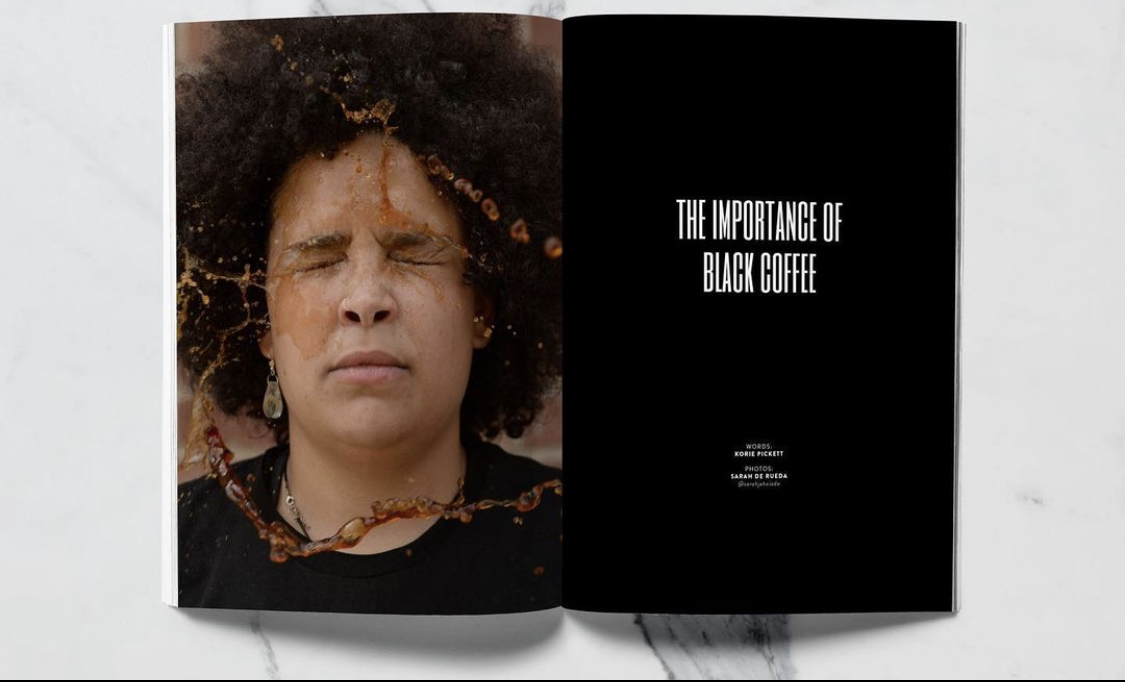
CC: What is a Queen to you?
KP: So, that breakup that I was talking about… definitely shattered my confidence. I was wrecked. I was pieces of myself and I didn’t know who I was. I put all of myself into that relationship to the point where I was harming myself. I was thinking of what it was going to take for me to honor and recognize myself. I usually choose words for seasons or years for myself, and at that time it was queen. A Queen is somebody who looks out for her Queendom. Who puts others’ needs at the forefront of her mind, but knows you can’t lead anyone unless you are well and taken care of. A Queen is someone who is going to take time to make sure that their needs are honored in order to honor the needs of others. It became a movement for me. It became a mantra. From there I learned how to step into it for myself. It is a way that I identify, and a way that I can fully understand myself. Even in the moments that I might not feel I own that word, that’s always what I aim for. I make sure that’s who I present to myself, to others, and that I am moving in kindness. Especially as a Black woman, Queen has been a word within our community. Something that I keep in mind is to honor our Queens. I am always going to honor another Black woman and ask, “How can I empower you? How can I make sure your struggle doesn’t have to be what mine was, or vice versa?” That goes for any person. But as a Black woman, that’s who I see. That’s translated into the bigger picture of all inclusivity. I always try to be the leader that I would want. When I think about a leader that I want, it is going to be someone who is a queen.

